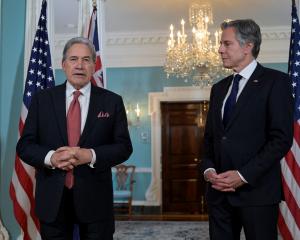All the positives the NZTA considers for cycle lanes on State Highway 1 apply to State Highway 88 in spades - and there are extra advantages, Hilary Calvert writes.
"For when I fool the people I fear I fool myself as well'' - Oscar Hammerstein may have been on to something when he wrote this as part of the lyrics of I Whistle a Happy Tune.
The New Zealand Transport Agency (NZTA) seems to have fooled itself into believing selected bits of its own rhetoric about cycleways, while not taking notice of the contrasts between how it views SH1 and how it views SH88.
The upside of the completion of the shared pathway near SH88 is huge.
● Everyone wants it.
● It creates a flat, pleasant route between Port Chalmers and the city centre.
● It will not cost any more in comparison to initial estimates than SH1.
● There are no parking issues.
● There will be significant tourism advantages, including a cruise ship passenger experience unsurpassed as an introduction to our city.
● Greater use of cycling will be likely as the experience of the ride in or out from Port Chalmers will encourage even the most timid of cyclists.
SH1 cycleways, on the other hand, have been fraught from the start.
The SH1 cycle saga began in 2001 when the NZTA started constructing a cycle lane down each of the SH1 pair.
These were painted, narrow lanes which delivered cyclists to the left hand wheel of trucks, where the driver is unable to see the cyclist.
Two cyclists were killed by trucks on these lanes, one in 2011 and one in 2012.
These tragedies led to the NZTA taking steps to make the cycleways safer.
The lanes were widened, bollards were installed. Fortunately there have been no fatalities since.
The NZTA has now committed, or just about committed, to separated cycle lanes down the SH1 pair.
But the SH88 cycle lane has gone back to the drawing board because of a cost blowout.
The more obvious priority for the use of cycle funds according to the reasons given over the years by the NZTA would surely be the off-road SH88 route.
The reasons for SH1 cycle lanes include safety, that they can be done within available funding and that they will encourage a goal of more commuting on cycles to work and school and more cycling in general.
SH1 cycle lanes are said to be a particular safety risk, but with the wider lanes we now have, and the proposed heavy bypass for trucks, we will reduce the danger for cyclists, especially if we also shifted the cycle lanes to the other side of the road.
However, SH88 is a major truck route, causing serious issues for vulnerable bikes trying to share with vehicles.
That there have not been many people sufficiently suicidal to cycle along SH88 does not suggest cycling along SH88 is more safe than cycling in the current cycling lanes along SH1.
As regards costing, the SH1 cycle lanes have increased in cost from the projected $3.5 million-$4.5 million to an expected $8 million, about double the estimate.
In comparison, the completion of the shared pathway near SH88 costs were projected to be $6 to $10 million.
What we have been told recently suggests these costs are likely to be within the earlier estimates, or at least significantly less than double the earlier estimates.
Both parking and traffic flow remain issues with SH1.
The proposed cycle lanes will create the loss of 275 car parks along SH1.
The NZTA has no responsibility for these parks.
The DCC says it is working on the issues around parking, but that the NZTA can choose to put cycle lanes wherever it wants on its own roads.
Dunedin people will pay, through the loss of parking and revenue for the DCC and the likely extension of parking meters in areas where people have been able to park free of charge. Businesses will lose close customer parking.
The proposal around traffic flow is for an additional traffic light phase for cyclists, thereby slowing down an already congested route through town.
If motorists ignore these lights, and we have a bad habit of running red lights in Dunedin, the intersections will be even less safe for cyclists.
None of these issues are problems with the shared pathway along SH88.
All the upside reasons the NZTA has for cycle lanes down SH1 apply to SH88 in spades, plus some extra ones such as the tourism advantages.
The DCC prioritised cycle lanes in 2012, putting the highest priority on a shared pathway along SH88.
That was a good call then.
It remains a good call. There is still time for the NZTA to make a different choice.
If we make it clear Dunedin wants completion of the shared pathway near SH88 to be a priority above SH1, the NZTA should at least take note of our preferences in our city.
Then maybe we can whistle a happy tune.
● Hilary Calvert is a Dunedin City councillor.












